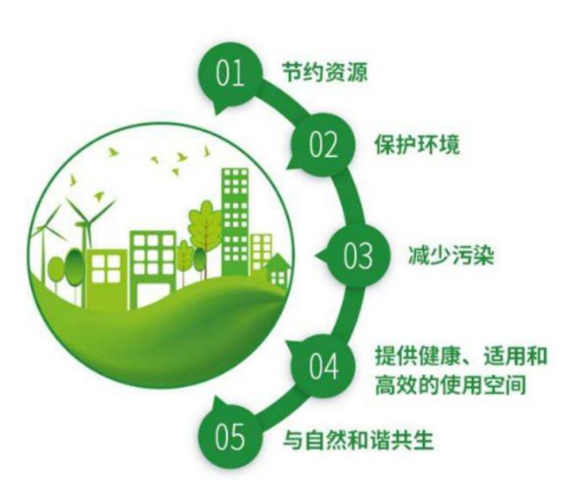With the advancement of science and technology, "architecture" has slowly evolved, from the earliest place to provide people with shelter from wind and rain to the current pursuit of more comfortable and ideal spaces. In recent years, the concept of "sustainable development" has been frequently mentioned. Architecture, as a discipline with a long life, has also shown its vitality and regained its vitality in the wave of sustainable development in the world. At the same time, "green building topics" are increasingly mentioned in theoretical examinations.

So, what exactly is a green building?
Green building: refers to saving land, water resources, energy, and materials (land, water, energy, and materials) to the greatest extent during the entire life cycle of the building, protecting the environment and reducing pollution, and providing people with Healthy, practical and efficient use of space and buildings that coexist harmoniously with nature.

Energy-saving building: It is a low-energy building designed by following the basic methods of climate design and energy saving, and studying the building planning partitions, groups and units, building orientation, spacing, solar radiation, wind direction and external space environment.
Low-carbon buildings: refer to buildings that reduce the use of fossil fuels, provide energy efficiency, and reduce carbon dioxide emissions throughout the entire life cycle of building materials and equipment manufacturing, construction, and building use.
Ecological architecture: It is based on the local natural ecological environment, using the basic principles of ecology, architecture and other related subject knowledge to rationally design and construct residential, office, commercial, production and other buildings.
Sustainable architecture: refers to buildings planned for sustainable development, including construction materials, buildings, urban area size, etc., to these related functional, economic, socio-cultural and ecological factors. Sustainable buildings pursue reducing environmental load, integrating with the environment, and benefiting the health of residents.
Why develop green buildings?

What kind of building is a green building?
1. Develop and utilize land rationally
The principles of green building design for land development and utilization are to emphasize the intensive use of land, make full use of surrounding supporting building facilities, and rationally plan land use in terms of building land saving and land resource utilization; Under the premise of using land, we will make efficient use of land and develop and utilize underground space.
2.Make full use of natural ventilation and lighting
In the design of green buildings, the interior and exterior of the building can be effectively connected to automatically adjust and adapt to regional climate changes, thus creating a comfortable and healthy indoor environment for the residents.
In terms of lighting, windows should be opened reasonably and the problem of western sunlight and lighting should be dealt with. It should be placed as far south as possible, and shading panels should be installed in rooms on the west. Skylights can be considered in some rooms, but direct sunlight should be dealt with to reduce the radiant heat of the sun. In summer, the air conditioner can be turned on less and the building energy consumption can be reduced. energy consumption.
In terms of ventilation, natural ventilation should be pursued, which is conducive to ventilation and allows the air to flow smoothly. Good ventilation can not only supply fresh air and remove heat and moisture, but also rely on air flow to promote the evaporation and cooling of human sweat in summer, giving people a sense of comfort.
3. Design three-dimensional greening
Designing three-dimensional greening means introducing green plants as important elements and integrating ecological and humanistic factors into the architecture. At present, urban land is becoming increasingly scarce and building coverage continues to increase. Roof greening has become an effective measure to improve the urban environment. Carry out greening in the external space of the building, set up flower racks, corridors, etc. to reduce the impact of solar radiation on the surrounding environment and improve the microclimate.
4. Choose green materials
Green buildings actively promote new technologies, use new materials, and adopt new products. The materials and forms of green buildings will be diverse, efficient and multi-functional. Therefore, the outer envelope materials and structures of green buildings, on the one hand, serve as the interface for energy conversion and need to collect and convert natural energy and prevent energy loss; on the other hand, the thermal insulation of new building materials themselves makes the indoor temperature tend to be constant. Therefore, the materials for green buildings must be environmentally friendly and energy-saving natural materials and new materials. Existing building materials must be evaluated for environmental protection and energy saving, and technical improvement and update measures must be proposed to make them meet the requirements of environmental protection and energy saving.
5.Adopt energy-saving technology
Adopt active energy saving and passive energy saving technology Active energy saving: Active energy saving technology uses mechanical and electrical equipment intervention to achieve the goal of reducing building energy consumption. Such as: sewage source ground source heat pump system, surface water source heat pump system, soil source heat pump system, ice storage system, solar photovoltaic power generation system, wind energy power generation system, etc.







